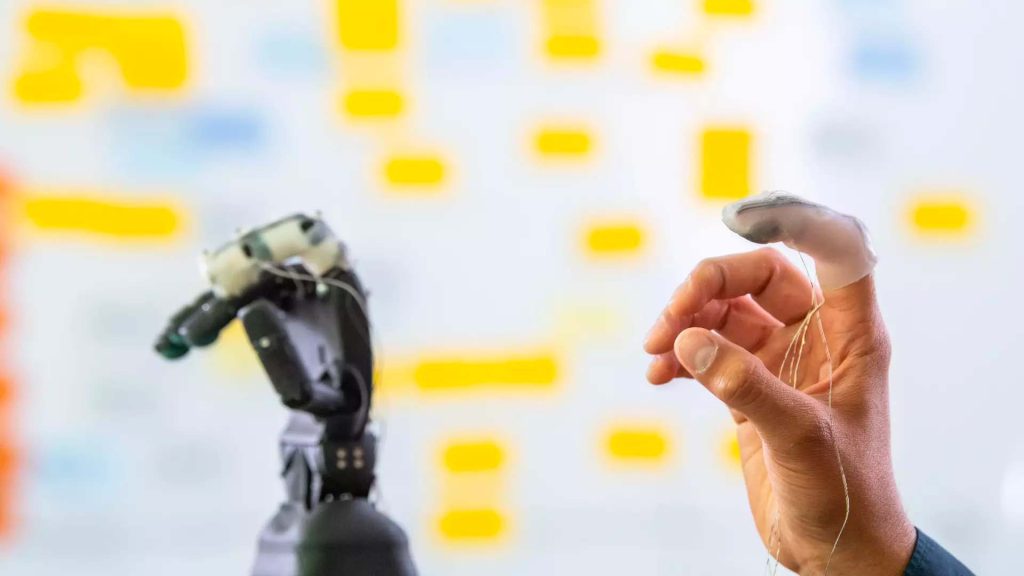Neuromorphic chips, robotic navigation and flexible sensors. Here are three of the latest tech innovations from across the world.
Neuromorphic chip
A chip developed by a team at RMIT University mimics human vision to capture visual information and classify it in a memory system.
Made from doped indium oxide, the technology is thousands of times thinner than a human hair and can process information without having to rely on external computation.
Such neuromorphic vision systems, which can adapt to new situations as they are presented, are superior to traditional systems that struggle to adjust to unexpected circumstances.
“Performing all of these functions on one small device had proven to be a big challenge until now,” said Professor Sumeet Walia.
“We’ve made real-time decision making a possibility with our invention, because it doesn’t need to process large amounts of irrelevant data and it’s not being slowed down by data transfer to separate processors.”
The team anticipates its device finding use in self-driving cars or for detecting space junk and operating in environments hostile to human workers.
Skin-like sensor

An automatic process for creating soft sensors developed by engineers at Germany’s Technical University of Munich (TUM) has resulted in a “skin” that can be moulded into nearly any shape.
The material can be wrapped around any object — such as a human finger — and is designed to allow a prosthetic to realistically emulate the sensory and manipulative abilities of a real person.
The material is produced from a conductive black paste that is injected into liquid silicone; although the silicone hardens, the paste encased within it remains fluid.
“We use software to build the structure for the sensory systems,” said TUM’s Diego Hidalgo. “We then send this information to a 3D printer where our soft sensors are made.”
The sensors detect compression and stretching via changes to their electrical resistance that occur when they are squeezed.
The technology could be applied to advanced haptics for artificial intelligence, sophisticated interactions between humans and machines, and customisable wireless and sensor technology.
Underwater robotic navigation
A collaboration between researchers in Spain and the US has shown that underwater robots can be trained to track marine objects using a neural network.
The technique, known as reinforcement learning, permits the robots to discover which actions they undertake are effective in permitting them to reach a goal.
In the research, a robot used acoustic techniques to determine the location of an object; by applying reinforcement learning, the neural network was able to determine the best position from which to take measurements.
“This type of learning allows us to train a neural network to optimise a specific task, which would be very difficult to achieve otherwise,” said Ivan Masmitjà of Barcelona’s Institut de Ciències del Mar and California’s Monterey Bay Aquarium Research Institute.
“For example, we have been able to demonstrate that it is possible to optimise the trajectory of a vehicle to locate and track objects moving underwater.”